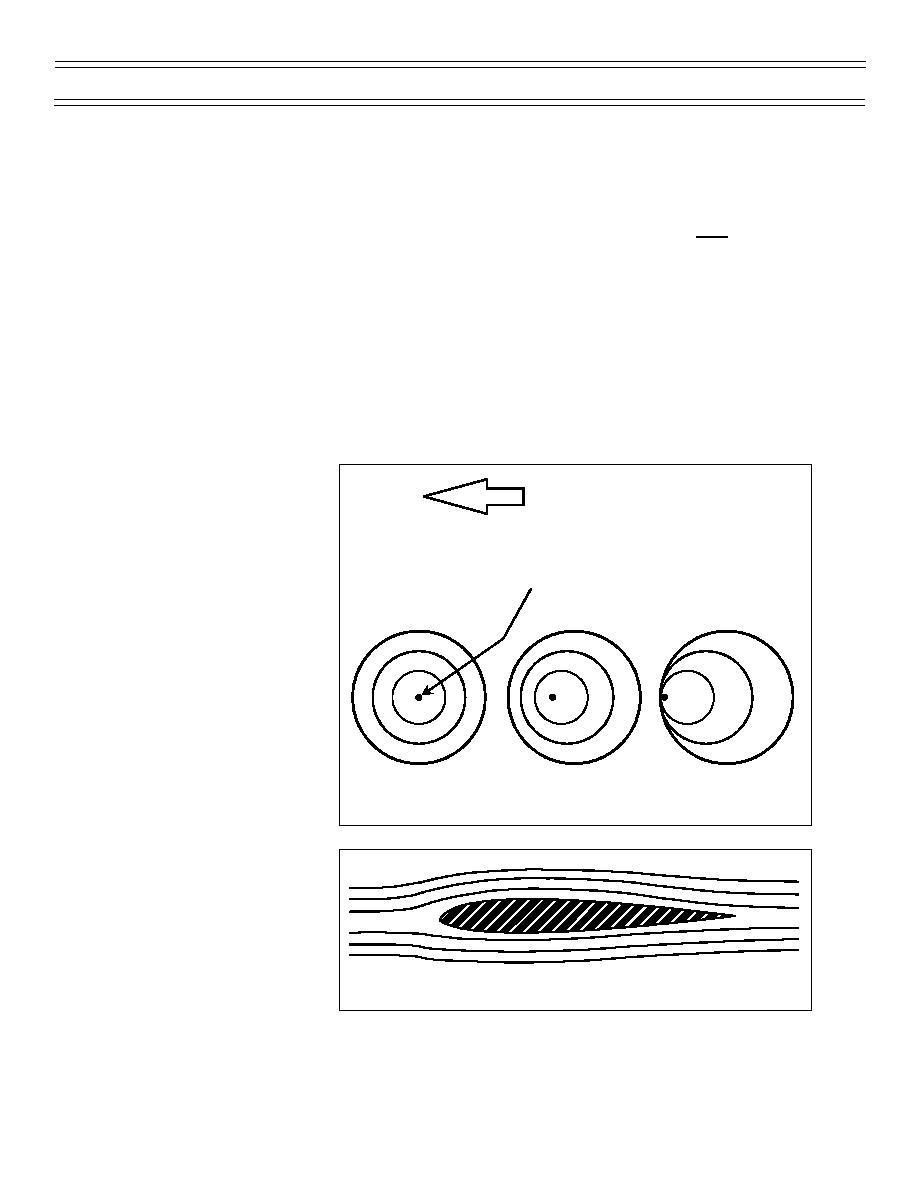
Aero Chapter 02, High-Speed Flight
T-45 Aerodynamics Student Workbook
FLIGHT REGIMES
In the study of subsonic flight, compressibility of airflow is normally ignored. It is important to remember
that compressibility effects are not limited to flight greater than the speed of sound. Compressibility is
progressive and the effects may be experienced in flight well below the speed of sound. Compressibility
effects we will discuss are due to the pressure waves created. On any aircraft, there are local airflow
velocities greater than the flight velocity. Both subsonic and supersonic airflow may exist on an aircraft in
flight at transonic Mach numbers. These airflow velocities are used to define the flight regimes:
Subsonic Flight:
All airflow about the aircraft is subsonic. (Up to 0.8 Mach for the T-45)
Transonic Flight:
There is a mixed airflow about the aircraft, that is, part subsonic and part supersonic.
(0.8 - 1.2 Mach)
Supersonic Flight:
All airflow about the aircraft is supersonic. (1.2 - 5.0 Mach)
Because changes in pressure, density, temperature, and direction of airflow passing through a
compression wave occur suddenly, compression waves are frequently referred to as “shock waves.”
There are three forms of the shock wave: the normal wave, oblique wave, and expansion wave.
COMPRESSION WAVE
FORMATION
DIRECTION OF MOTION
As an object moves through the
All waves generated at equal time intervals
airmass, pressure disturbances
are created in the airflow
surrounding the object. These
pressure disturbances are
Point Source for Pressure Waves
propagated through the air at
the speed of sound in all
directions (Figure 13a). If the
object is traveling at a speed
less than the speed of sound,
the pressure disturbances move
away from the object but are
compressed in the direction of
motion, as the pressure waves
cannot move uniformly away
from the object (Figure 13b).
a. NO MOTION
c. SONIC (MACH 1.0)
b. SUBSONIC
The pressure wave created by
Figure 13: PRESSURE WAVE FORMATION
the object influences the airflow
ahead of the object. The
compression wave is not strong
enough to obstruct airflow but
acts like a wedge to divert the
airflow around the object
(Figure 13c). When an object is
traveling at speeds close to or
greater than the speed of
sound, the pressure
disturbances are not
Figure 14: TYPICAL SUBSONIC FLOW PATTERN
propagated ahead of the object
but “pile up” on each other to
form a concentrated compression wave (Figure 13c). The smooth subsonic flow is shown in Figure 14.
Page 12
(7-99) Original



 Previous Page
Previous Page
